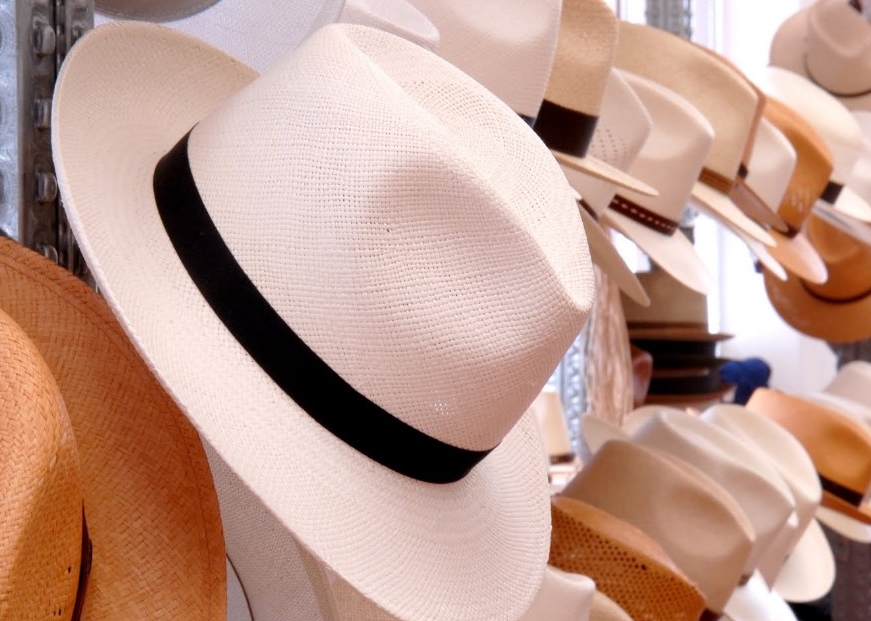
The traditional activity of the hat district is concentrated around the Marche region and more specifically in the towns of Montappone and Massa Fermana. It began in 1300 when hats were used exclusively for farming activities. Grain harvesting produced straw, which was then braided to be used as a raw material for making “straw hats”.
Before braiding, the straw was soaked so that it would not break while being woven. The most common plaits used were those with four, seven and thirteen strands of straw. Once completed, protruding strands from set-ins were removed from the braid with a knife or scissors.
To make the braid more pliable for stitching (especially by machine) it was passed through two wooden or iron rollers (press). The braid was then sold in bundles (rolls) obtained by winding it on a measuring device called a “passetto”.
The traditional “harvest” hat was hand-sewn with a large needle and thread, edge to edge, with one stitch on the inside and one on the outside. Due to the ability of the seamstress, the thread stitches were invisible, disappearing between the weave of the braid. The first genuine straw hat factories appeared in the 19th century. These were basically small craft workshops that employed their own specialised workers.
It was only in the late 1950s that the Hat District became a highly specialised single-industry hub.
On the hilltops in the hinterland of Marca Fermana, with their typical comb-shaped configuration due to water courses, there is a church steeple for each of the medieval villages, where historical and architectural heritage intermingles with a very modern craft industry and business that as a whole forms the Hat District.
A legend about the origin of the Marca Fermana straw hat tells of a king who owned the largest collection of crowns ever seen. The king promised the hand of his daughter to whoever would ask him for it with wise words and offer the most unusual crown as a pledge of his love.
The king’s only desire was his daughter’s happiness, and he rejected proposals from princes, warriors and wealthy merchants, who merely flaunted their wealth and power, but was struck by the words of a young farmer, Giovannino, who spoke of love, simplicity, family, work, peace and harmony.
So he asked him if he had brought a crown as a pledge and he answered that he would do so. He went home and picked three sheaves of corn, opened them to see if they were ripe and rubbed off the grains with his fingers. Three birds immediately descended on the fallen grains and then took off, flying in a harmoniously interwoven pattern. Giovannino then had an idea: he took the three ears and began imitating the pattern traced by the birds. The following day he returned to the palace with a straw hat. The king was impressed and gave him his daughter’s hand and they lived happily ever after.
From that time on, the people of Giovannino's village began to weave straw in the same way and thus made their fortune.
By Camera di Commercio di Fermo



